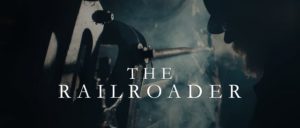The Railroader, a 2019 short film directed by Russell O. Bush about locomotives and their history within America, is a visually stunning short featured at the Mountainfilm festival this year. Composed of a motivational narrative, effective storytelling, and captivating cinematography, The Railroader is a film worthy of its place at Mountainfilm and a fun short documentary to watch.

A good documentary, feature length or not, should have a story that pulls its audience in from the get-go. The story shared by John Bush in The Railroader about locomotives and their history in America is not only interesting, but has ties to the town of Telluride, where the Mountainfilm festival has been held for the past 41 years. John tells his story of growing up around trains in Telluride, and how he works with others to preserve the traditional ways of maintaining the railroads. While stories are crucial in any film, so is the way that those stories are incorporated into the picture.
Bill Nichols has written a few works on the art of documentary filmmaking, describing what he classifies as “modes” that depict the different characteristics of a documentary. Some of Nichols’ modes are used in The Railroader, such as the poetic mode and expository mode. The poetic mode can be seen throughout the short by its emphasis on visual associations, rhythmic qualities, and descriptive passages. The emphasis on visual associations are mainly focused on the locomotives, with the camera focusing on different parts of the trains such as the wheels, the smokebox, and the firebox where coal is put in to fuel the train. Rhythmic qualities of the poetic mode are mainly found through the sound of the train chugging, which plays in time with drum beats. Descriptive passages are revealed simply through the detailed story that John Bush shares in the film, sharing memories from the train yard along with how he’s grown to love and work around trains. Nichols’ expository mode primarily comes into play with the use of argumentative logic and evidentiary editing. Bush’s push for the preservation of operating locomotives the traditional way provides the argumentative logic, and evidentiary editing is found through the shots lining up with Bush’s story in order to bring attention to what he is saying.

Another part of the filmmaking process that goes hand in hand with Nichols’ modes is the breathtaking cinematography. The Railroader is a beautiful example of how cinematography can affect an audience, drawing them in with each planned shot. Cinematic lighting plays on the shadows of locomotives, whether they’re sitting in the train yard or emerging from a dark tunnel, the lighting plays a key role in making a film visually appealing. Slow motion shots are also paired with the lighting throughout this short film, and bring a powerful, industrial vibe to the final product.
Although The Railroader is a short documentary, that doesn’t mean it has any less of an impact than a feature film. Through a personal and detailed story from John Bush, poetic and expository modes, and polished cinematography, Russell O. Bush created a beautiful film that not only manages to capture the audience in its grasp, but also provides an important story on how locomotives have made an impact on America throughout history. And in John Bush’s words, it’s important to remember that you don’t have to be old to be dead, so if there’s something you love, go do it.

Recent Comments